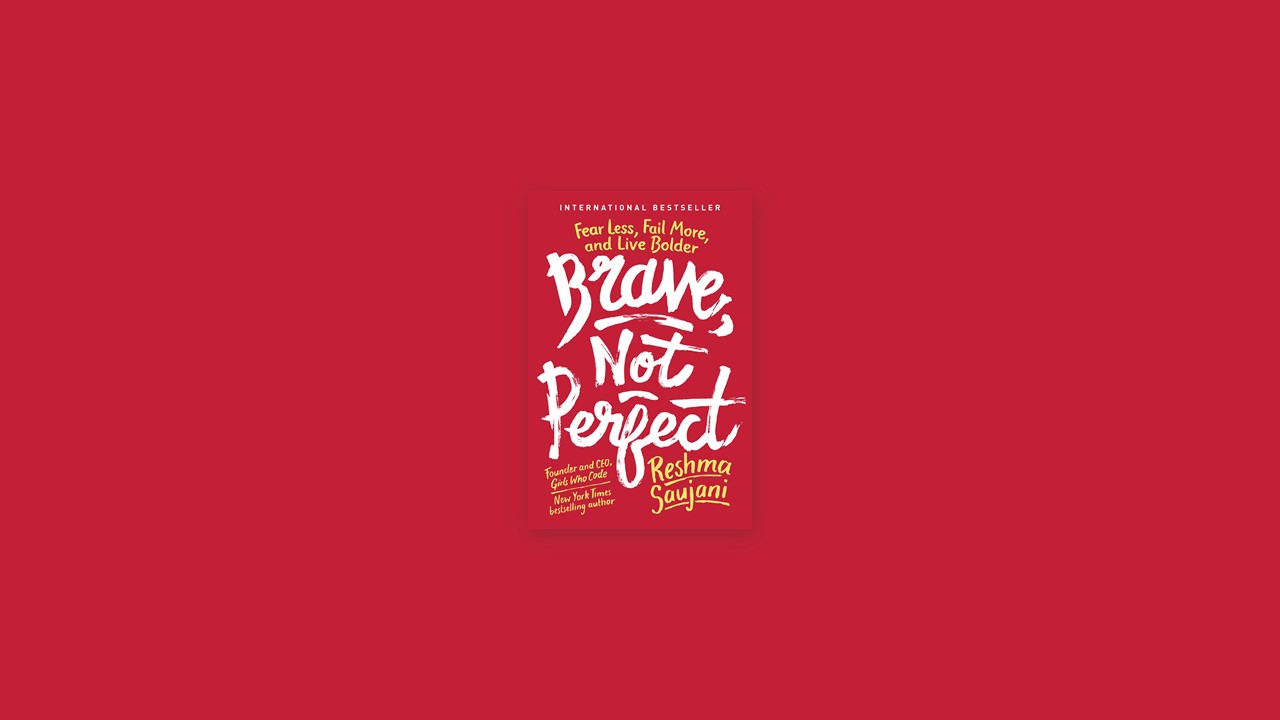Perfect Is Boring
We hold up the notion of “perfect” as the ultimate goal. No mistakes, no flaws, no rough edges. But the reality is that it’s the messy, unfinished edges that make us interesting and our lives rich. Embracing our imperfection creates joy. Plus, if you’re already perfect, where’s the fun in learning or striving?
The most interesting people have flaws and quirks that make them uniquely amazing. If you think about it, it’s actually kind of funny that we even strive to be perfect in the first place, given how unfulfilling it is if and when you get there.
Bravery, on the other hand, is a pursuit that adds to your life everything perfection once threatened to take away: authentic joy; a sense of genuine accomplishment; ownership of your fears and the grit to face them down; an openness to new adventures and possibilities; acceptance of all the mistakes, gaffes, flubs, and flaws that make you interesting, and that make your life uniquely yours.
Redefining Bravery
that we need to recast bravery as far more than one-dimensional. It’s broad, complex, and context-specific—that is, a person may be bold in one area but not another. You can be bold and fierce in your entrepreneurial spirit but skittish in dating, or perfectly comfortable investing in the stock market but wouldn’t in a million years skydive
It’s also deeply personal. For some, rappelling off a cliff is the bravest thing imaginable; for others, it’s giving a speech in front of twenty people. Soldiers who fight on the battlefield are brave; so are the women who fight for the right to birth control and reproductive choice. First responders who step up to save lives are brave; so are the women who risk their livelihood to speak up about sexual assault at the hands of powerful men. Senator John McCain was brave in September 2017 when he crossed party lines to stand up for what he believes; so was Shonda Rhimes when she made interracial couples the norm on her groundbreaking hit television shows.
It’s all bravery, and it all matters. We need to change our approach and do things authentically. Being brave like women is about making choices based on what we want and what makes us happy, not what others expect or want for us. If being a senator or a Fortune 500 CEO are your true goals, awesome! But they don’t have to be. Just as there is no one “right” way to be brave, there is no one universal definition of success.
Why Be Brave?
Bravery is why we try that twentieth cartwheel that we triumphantly nail after falling nineteen times. It’s what sends us off to college or far from home where we don’t know anyone, what encourages us to follow a passion into our first job. Bravery enables us to start a business, change careers, or ask for the salary we deserve. It allows us to be vulnerable enough to ask for help and helps us muster the strength to forgive someone who hurt us. It inspires us to be generous and support other women without fearing that it diminishes us. As Winston Churchill once said, “Courage is the first of human virtues because it makes all others possible.”
Bravery makes falling in love possible. It takes courage to allow someone to see the real you, flaws and all, and to accept someone else who is equally imperfect.
Bravery makes us better parents. When we let go of the unrealistic expectations for ourselves, we then naturally ease up on our kids. When we stop obsessing about our kids’ grades or college essays, we help them see the joy in learning. We show them by example how to pursue excellence without making it about perfection, and that the world won’t end if they screw up or fail. It’s brave to allow your kid to be exactly who they are and do what they love, even if you don’t agree with their choices. They’re happier and healthier for it, though, and so are you.
Build a Bravery Mindset
Strategy #1 Claim the Power of “Yet”
I’m not brave…yet.
I’m not the kind of person who takes risks…yet.
I’m just not good at saying no…yet.
Suddenly, you’ve gone from stuck to free. You’re growing toward something, on your way from where you are to where you might go. Psychologist and motivational pioneer Carol Dweck referred to this as embracing the “power of yet” as opposed to “the tyranny of now.”
This small mental shift can have a powerful impact, especially when it comes to reframing mistakes. You didn’t “not succeed”—you just haven’t succeeded yet. When you look at it that way, mistakes don’t have to become glaring signs of permanent limitations or failures—they’re just temporary setbacks.
Strategy #2 Do the “Drama vs. Wisdom” Test
Being thoughtful is smart. It’s wise to survey the landscape and weigh the pros and cons before taking any action that involves risk. It’s when we overthink, overprepare, and overanalyze that we veer out of cautious territory and into Stucksville.
The border between those two zones is marked by fear. The key to crossing it is learning to recognize when you’re being wisely cautious and when you’re talking yourself out of something just because you’re afraid. When you pass on a challenge or an opportunity, ask yourself, Does this really not make sense to do, or am I not doing it because I’m scared and out of my comfort zone?
The next time you’re about to take a pass on something, hit pause and ask yourself if it’s your drama or your wisdom that’s talking. It’s a great way to practice calling bullshit on your automatic excuses and to get real with yourself instead.
Strategy #3 Look for Your Ledge
What’s the one thing you’re most afraid of doing? The thing that if you could do it, you know it would make a major difference for you in your life?
Rha Goddess calls that one thing your “ledge.” She says all of us are being called to some ledge, whether we’ve wanted to consciously acknowledge it or not.
Where’s your ledge that you’re being invited to step out onto? If you’re not sure, start looking where your comfort zone is; as Rha says, anyplace you’re comfortable is a place to be a little bit suspicious. I’m not saying you have to go there just yet—or even at all—but training yourself to at least look for it channels your mindset in the right direction.
Strategy #4 Take Your Own Advice
Here’s another easy but highly useful tip from Adam Grant:
When you’re faced with a “scary” challenge or opportunity and debating what to do, ask yourself what advice you would give someone else in that situation. “On average, we make better decisions for others than we do for ourselves,” he explains. “All we need for ourselves is one or two reasons not to do it and we can give up. But if we’re giving someone else advice, we can take a big step back and discuss the fundamental reasons why they should or shouldn’t do it.”
For instance, imagine you’re asked to give a presentation at work that pushes you outside your normal comfort zone. Maybe the audience is much bigger than you’re used to, or public speaking in front of clients makes you break out in a cold sweat. Left to your own rationalization, you might conclude it’s just not worth it and say no.
Strategy #5 Set Daily Bravery Challenges
As Dr. Meredith Grossman explains, one of the best ways to change what we think and believe is by changing what we do—kind of like changing from the outside in. It’s hard to believe something to be true without having the actual experience of it; seeing it in action gives you the proof. You can work hard to convince yourself that you won’t forever lose the respect of your colleagues if you say something dumb in a meeting, but until you actually utter something less than brilliant and see that nothing terrible happens, you won’t entirely believe it to be true.


